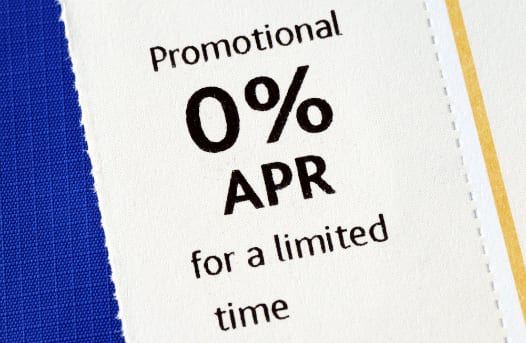Zero-Interest Credit Cards Making a Comeback
A sign that the economy is inching back to normal, or a warning that banks are looking for new ways to squeeze money out of consumers? Either way, zero-interest credit cards are once again available after their decline during the economic downturn.
For the first time in four years, several large credit card companies, including Chase, Discover and Citi, are again offering zero-interest credit cards to shore up their customer bases. Better yet is that some of these cards are offering no annual fees.
Before the recession, zero-percent cards were the norm for many banks. These alluring introductory rates aimed to attract new customers with the idea that these individuals would stay on board once the teaser period ended, typically in several months. Some experts are calling the reemergence of zero-rate cards a refreshing thaw following the credit freeze that resulted from the nation’s financial collapse.
Using Zero-Interest Cards Wisely
Experts say that zero-interest card offers aren’t going out to every consumer – just hand-chosen ones. Typically, those with credit scores of 720 or higher and those who carry balances on their cards are seeing offers in their mailboxes.
For consumers, the key to using these cards successfully is knowing how to play the credit game with authority. That is, read the fine print on the credit card statement, known when the teaser rate ends and know how much the interest rate will soar once that teaser rate is over.
Some cards keep track of interest but defer the payments. If a consumer repays the balance in full before the introductory period ends, the card can save money. But if one payment is missed or the balance isn’t paid off in time, the consumer is on the hook for back interest.
Likewise, one missed payment can turn a zero-interest card into one with interest rates above 20 percent. “If you do miss a payment or you’re late on a payment, they’ll revert you to what they call the go-to rate,” one financial analyst said. “Those rates are 20 to 25 percent.”
On the plus side for consumer are the 2009 federal regulations that mandate a minimum six-month period for an introductory rate. In fact, many credit card companies are offering 18 months or longer at zero interest. While many credit card companies charge a 3 percent fee for balance transfers, it could be a good investment in the long run.
Above all, individuals can use these zero-interest cards to their favor by cutting back on debt overall. If you get a zero-interest card, it’s time to focus on paying off debt, whittling back on spending and methodically paying off balances. Resist the temptations of a new credit card. The bottom line: don’t overspend or delay payments.

2 Minute Read
Sources:
- Hopkins, C. (2012, October 3). Personal Finance: Zero-interest credit cards now making a comeback. Timesfreepress.com. Retrieved from http://www.timesfreepress.com/news/2012/oct/03/zero-interest-credit-cards-comeback/
- WTOP (2012, September 5). Zero-interest credit cards great deals for rule-followers. Retrieved from http://www.wtop.com/628/3023105/Zero-interest-credit-cards-great-deals-for-rule-followers

















